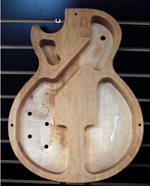Fart Ripper
Member
Perhaps I’m misunderstanding your view on guitar body density and mass as related to damping and resonance. What is your take on chambered vs non-chambered guitar body related to the sound?My understanding of the existing literature is that the construction of the neck does matter for a guitar's tone, which is why I've been careful to specify that I'm talking about body wood.

